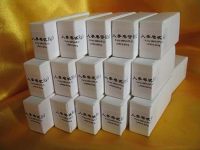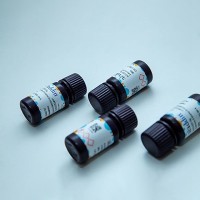稳定表达具有生物活性的人重组对氧磷酶
互联网
2420
INTRODUCTION
Serum paraoxonase-1 (PON-1) is a high-density lipoprotein (HDL)-associated calcium-dependant esterase with antioxidant and anti-atherogenic properties. The activity of paraoxonase-1 has been implicated in the pathogenesis of many disease states, including metabolic syndrome, cardiovascular and Alzheimer's disease. Paraoxonase-1 also plays a critical role in the metabolism and detoxification of insecticides and pesticides (1).
The aim of this study was to express a biologically active form of human recombinant PON-1 in the mammalian cell line CHO.
METHODS
Construction of the paraoxonase : cloning vector
The coding region for human paraoxonase-1 was amplified from human liver cDNA using a set of gene specific primers and ligated into a mammalian expression vector under the control of a CMV promoter. Identification of a plasmid possessing the open reading frame of the paraoxonase-1 gene was carried out by PCR analysis using gene specific primers. Confirmation of insert readings frames by sequencing was performed and an endotoxin free plasmid DNA solution prepared for transfection.
Transfection of CHO cells with paraoxonase-1containing plasmid.
The CHO cell line was maintained in the appropriate media supplemented with suitable antibiotics. CHO cells in growth phase were co-transfected with the recombinant mammalian expression vector containing the paraoxonase-1 gene using cationic lipid mediated transfer. CHO cells were incubated for 24 hours to allow for expression of the selection resistance gene, and then selected in growth media supplemented with the specific selection antibiotic. Antibiotic resistant foci were picked under sterile conditions, expanded and the expression of paraoxonase-1 confirmed by western blot analysis using an anti-paraoxonase-1 antibody.
Large-scale expression and harvesting of paraoxonase-1 protein
Positive foci were identified and seeded into expansion cultures containing media supplemented with selection antibiotic. Cells were harvested at 90% confluency and washed to remove contaminants. Cell pellets were lysed for 1 hour at 4°C in buffer containing protease inhibitors and the crude lysates clarified by centrifugation and stored on ice.
Confirmation of paraoxonase-1 activity in lysate
The bioactivity of paraoxonase-1 present in the cell lysate was demonstrated by its ability to hydrolyse 4 mM phenyl acetate in 20 mM Tris HCl buffer pH 8.0, containing 1 mM CaCl2. As a control 10 mM EDTA was added. As negative control the reaction was also carried out using a non transfected CHO lysate sample. The rate of phenol formation was followed over 2 minute period/270nm/25°C. The activity is expressed in U/L
Immuno-reactivity of paraoxonase-1
The immuno-reactivity was established by Western blot analysis for different concentrations of PON-1, using commercially available anti-human paraoxonase-1 antibodies.
Stability of human recombinant paraoxonase-1
Samples of the paraoxonase-1 CHO cell lysate were stored at 40C and -200C and the bioactivities were assessed by measuring the rate of phenol formation as described above over a 6-week period.TIOXIDANT AND PROTECTOR FROM ORGANOPHOSPHATE-INDUCED TOXICITY.

Results



Conclusions
These data demonstrate the expression of a biologically active human recombinant paraoxonase-1 protein in the mammalian cell line CHO as shown by the capacity to dephosphorylate para-nitrophenyl phosphate.
The protein is immuno-reactive as demonstrated by western blot analysis with the predicted molecular weight of 42.9 kD.
In addition, our data show that the protein is stable in solution when stored at 4oC or -20oC.
This human recombinant paraoxonase-1 may be used as a control on western blots or as a tool to investigate paraoxonase-1 activity in vitro.
REFERENCES
1. Mackness, B. et al. Human serum paraoxonase. Gen. Pharmacol. 1998, 31(3): 329-336.









